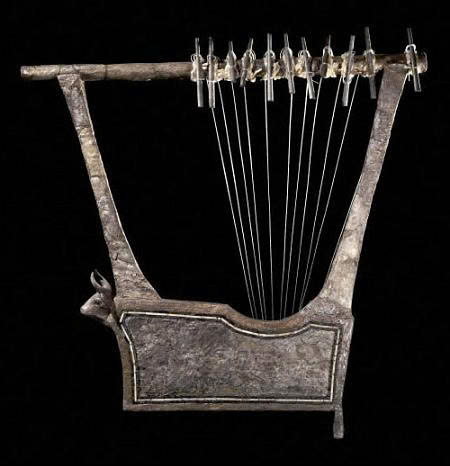In the heart of ancient Mesopotamia, within the sacred grounds of the Royal Cemetery of Ur, lies a remarkable testament to human creativity and spiritual devotion: a magnificent lyre dating back to 2600-2400 BCE. This extraordinary musical instrument, discovered in what archaeologists call the “Great Death-Pit,” tells a fascinating story of life, death, and the intricate beliefs of one of humanity’s earliest civilizations.
The Great Death-Pit: A Royal Gateway to the Afterlife
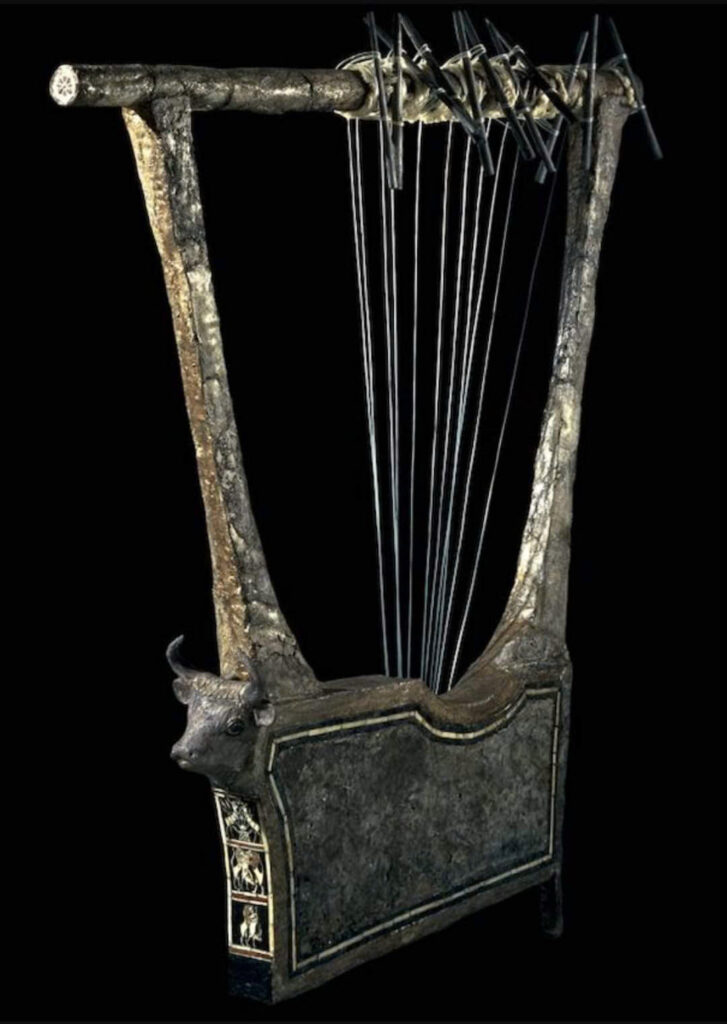
Deep within the Royal Cemetery of Ur, archaeologists uncovered a mass burial site that would change our understanding of ancient Mesopotamian culture. This “Great Death-Pit” contained not just precious artifacts, but also the remains of numerous individuals who were sacrificed to accompany their royal masters into the afterlife. Among the treasures found in this solemn place, the golden lyre stood out as a symbol of both earthly power and divine connection.
A Masterpiece of Ancient Craftsmanship
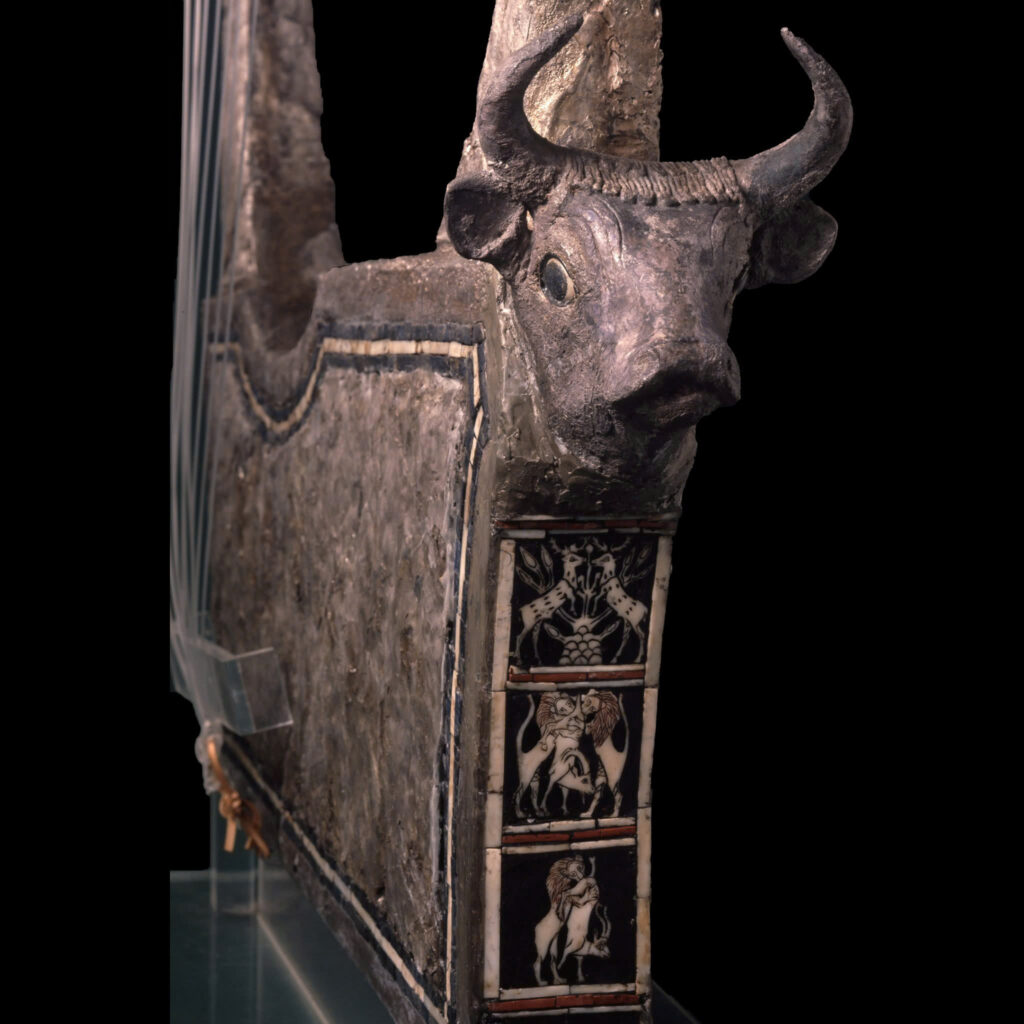
The lyre itself is a stunning example of Sumerian artistry. Adorned with precious gold, silver, and deep blue lapis lazuli, it represents the pinnacle of ancient craftsmanship. Its most striking feature is the bull’s head decoration, a powerful symbol representing strength and fertility in Sumerian culture. Every detail of the instrument speaks to the incredible skill of its makers and the importance placed on both music and visual beauty in their society.
The Sacred Role of Music in Ancient Mesopotamia
Bridging Worlds Through Melody
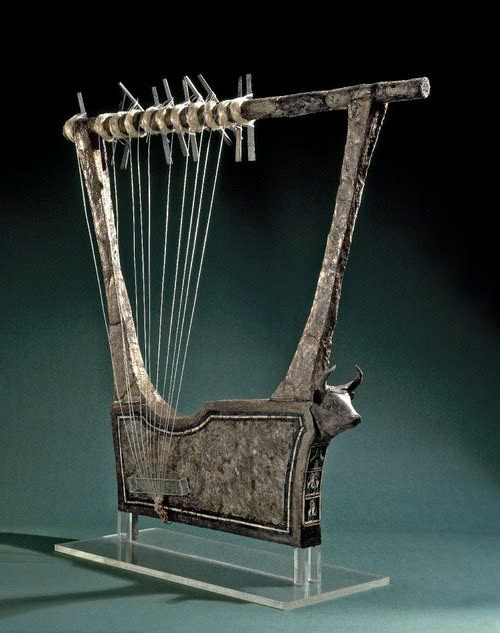
For the Sumerians, music was far more than entertainment – it was a sacred bridge between the world of the living and the divine realm. The presence of the lyre in the royal burial chamber suggests that music played a crucial role in funeral ceremonies, perhaps guiding souls through their journey into the afterlife or providing comfort to the deceased in their eternal rest.
Royal Power and Divine Connection
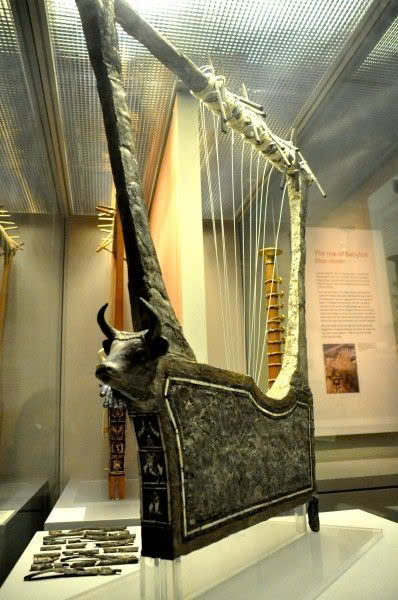
The placement of such a precious instrument alongside sacrificed attendants reveals a complex belief system where status and power extended beyond death. The lyre served as both a symbol of royal authority and a tool for communicating with the gods, embodying the Sumerian understanding of a cosmic order where kingship, religion, and the afterlife were inseparably intertwined.
Legacy of the Ur Lyre
This ancient instrument continues to captivate scholars and enthusiasts alike, offering invaluable insights into the sophisticated world of early Mesopotamian civilization. Its discovery in the Great Death-Pit has helped us understand not just the musical traditions of ancient Sumer, but also their profound beliefs about death, divinity, and the enduring nature of power.
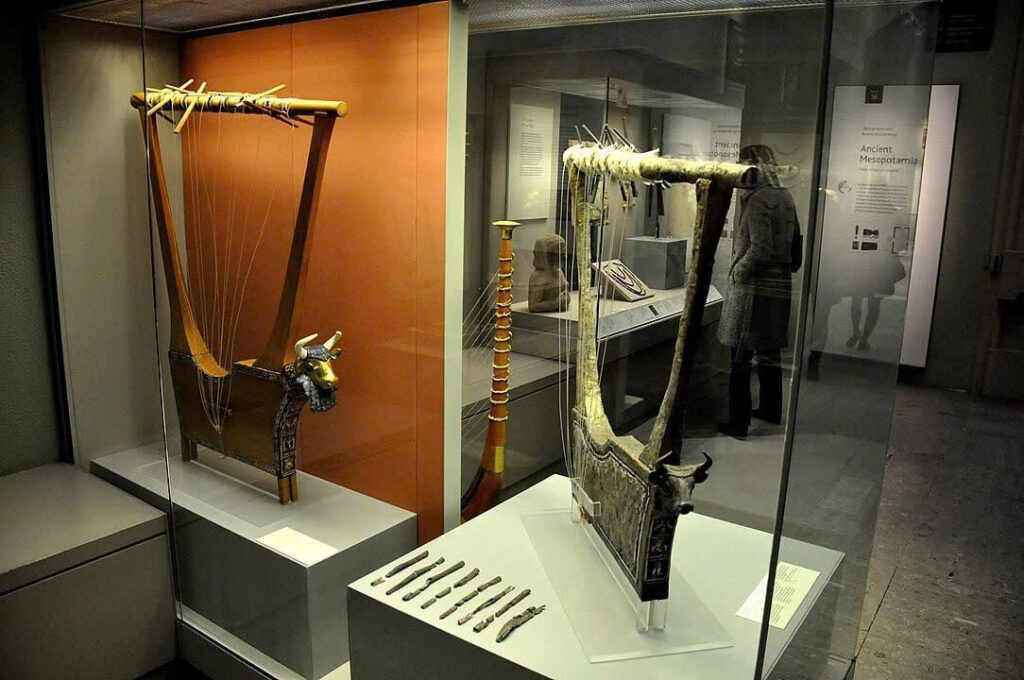
The lyre of Ur stands as a testament to humanity’s eternal quest to understand the mysteries of life and death, and our enduring desire to bridge the gap between the earthly and the divine through the universal language of music.
